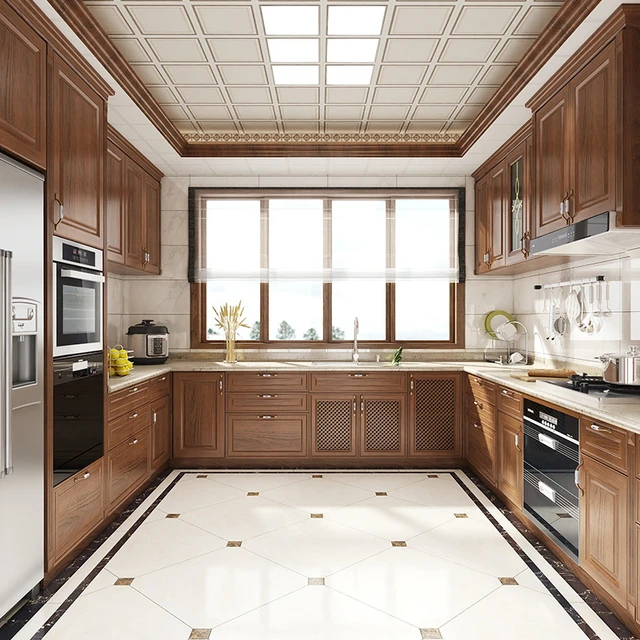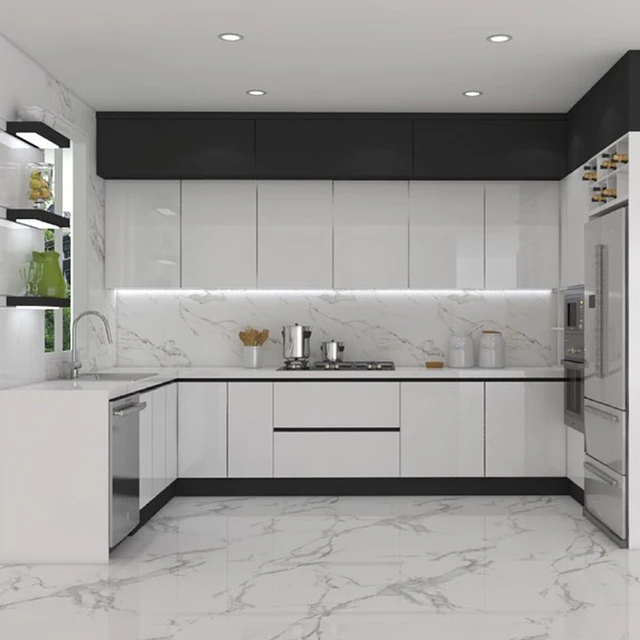 Introduction:
Introduction:
The size of a kitchen plays a crucial role in its functionality and design. Whether you are renovating an existing kitchen or planning a new one, understanding the average size of a kitchen can help you make informed decisions about layout, storage, and appliances. In this comprehensive article, we will explore the average size of a kitchen and discuss factors that influence its dimensions. By understanding these considerations, you can create a kitchen that maximizes space and suits your specific needs.
Understanding Average Kitchen Sizes:
The average size of a kitchen varies depending on factors such as the overall size of the house, cultural preferences, and regional norms.
In general, a small kitchen is typically around 70 to 100 square feet (6.5 to 9.3 square meters).
A medium-sized kitchen ranges from 100 to 150 square feet (9.3 to 13.9 square meters).
Large kitchens can be anywhere from 150 to over 300 square feet (13.9 to 27.9 square meters) or more.
Layout Considerations:
The layout of a kitchen, such as the popular L-shaped or U-shaped design, affects its size requirements.
The layout should facilitate efficient workflow between the main work areas, including the sink, stove, and refrigerator.
The placement of cabinets, countertops, and appliances should allow for easy access and smooth movement within the space.
Storage Needs:
The size of a kitchen should consider the storage needs of the household.
Adequate cabinetry and pantry space are essential to accommodate dishes, cookware, and food supplies.
It is important to strike a balance between storage capacity and available floor space to avoid a cluttered or cramped environment.
Appliance Requirements:
The size and number of appliances can influence the dimensions of a kitchen.
Standard appliances, such as refrigerators, range ovens, and dishwashers, have recommended clearances and dimensions that need to be taken into account.
Built-in or custom appliances may require specific space allowances and impact the overall size of the kitchen.
Ergonomics and Safety:
The design of a kitchen should prioritize ergonomics and safety.
Adequate space should be allocated for maneuverability and to avoid overcrowding in high-traffic areas.
Clearances should meet safety standards, allowing for comfortable movement and avoiding accidental collisions or hazards.
Lifestyle and Personal Preferences:
The size of a kitchen should be tailored to the lifestyle and preferences of the household members.
Considerations such as the frequency of cooking, entertaining, and the number of occupants will influence the required space.
Additional features, such as kitchen islands or breakfast bars, should be considered to meet specific needs and preferences.
Maximizing Small Spaces:
Even with limited square footage, small kitchens can be efficient and functional.
Clever storage solutions, such as vertical cabinets or pull-out shelves, optimize space utilization.
Utilizing multi-purpose furniture, compact appliances, and creative layout designs can help maximize small kitchen spaces.
Customization and Flexibility:
The average size of a kitchen acts as a guideline, but customization and flexibility are key.
Every homeowner has unique needs, preferences, and spatial constraints.
Customizing the kitchen design and layout allows for the creation of a space that is tailored to individual requirements.
Conclusion:
Understanding the average size of a kitchen provides valuable insight into space requirements and design considerations. While the dimensions of a kitchen may vary, it is important to prioritize functionality, storage needs, and appliance requirements. By considering layout, storage, ergonomics, and personal preferences, you can create a kitchen that maximizes efficiency and reflects your unique style. Whether it is a small, medium, or large kitchen, customization and flexibility are essential in creating a space that meets your needs and enhances your culinary experiences.



